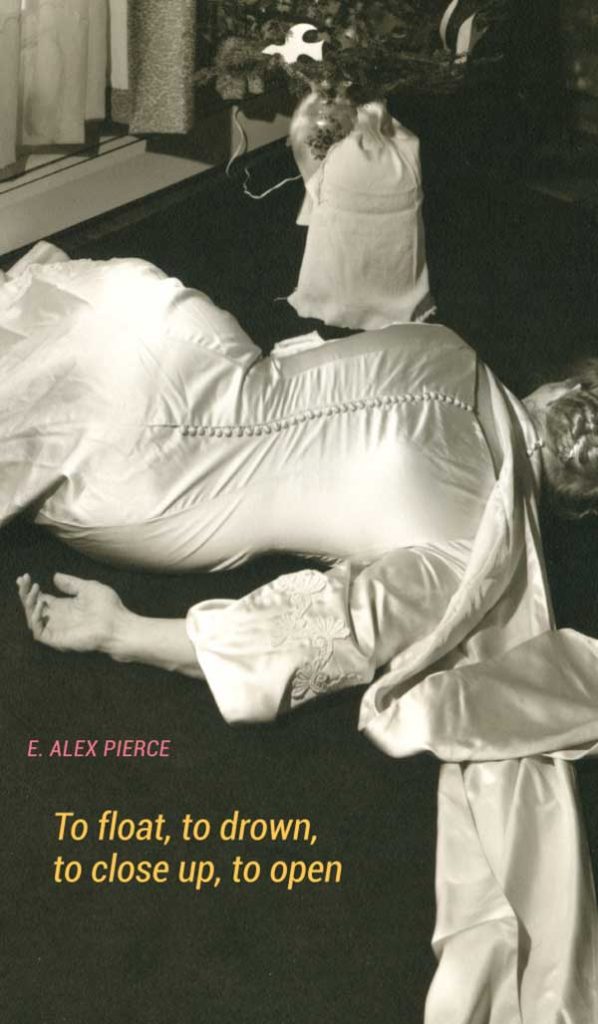 by Joan Shillington
by Joan Shillington
To float, to drown, to close up, to open
E. Alex Pierce
University of Alberta Press (2020)
ISBN 978-1-77212-453-8
In the last poem of her second collection of poetry, Nova Scotian E. Alex Pierce writes:
…What
drives the heart – to view a life lived backwards, unspooling. (Page 71)
which is what these well-crafted poems do. Pierce creates movements in the rhythm of the estuary of Sable River, where she grew up, opening, closing up, floating and drowning as consistently as moon directs the tides. The musicality of Beethoven and Bach symphony in the background throughout. She draws her reader inside her poetry as she drew herself
Inside the music now, she
begins to breathe. The notes carry her. (Page 35)
This collection is divided into four sections. The first, To float, to drown, to close up, to open – a throat explores childhood memories of grandparents’ homes, the delicate ecosystem:
… soft fragments of rock,
each piece worn flat – from shale, from sandstone, from slate,
enough mica from granite to make it sparkle – tiny pieces
stuck to the soles of your feet. (Page 4)
We’re introduced to her love,
To close up, to open – the piano, heart soaring. You can feel
a pulse beating there … (Page 7)
and the tension of long practices in freezing rooms. Death, trauma.
In Mithen, to conceal, second section, Pierce paints a surreal mood:
…she is standing by the door,
half shoulder turning. Her dressing gown half open,
a pattern, black on brown and the nipples
blown and rose burnt-brown… (Page 31)
the reader drawn inside open wells, tempests, The Fetch of Wind and her
… small sister, fixed
on the piece of red clover she finds in the haystack… (Page 36)
The Stanzas. Rooms. Section three, a series of sonnet-like love poems of 14-16 lines introduces her theatrical career and the author’s relationship with photographer/artist George Steeves:
That is why I fell in love with you. The music. The recorded detail. The absolute
resolution in the
instant. I want to say chemise, match the flutter, drawn out, to the shirts on the
line, the agitation
in my heart. (Page 44)
Hers is a poetry of attentiveness, reaching back through the years and into the future without sentimentality although the poems are intensely personal:
No one can ‘take’ an image – the subject, model,
has to give it. (Page 52)
Coda, Aubade concludes To float, to drown, to close up, to open with a single poem. With images of lilacs and spring. The reader left with a new dawn:
I am tired. Still blossoming. Spring
always comes, light in the dark. (Page 71)

